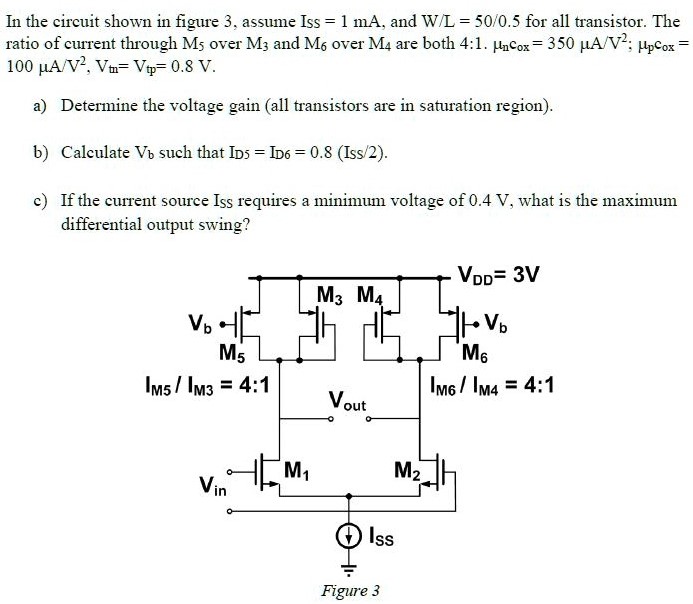In the circuit shown in figure 3 , assume Iss = 1 mA, and W/L = 50/0.5 for all transistor. The ratio of current through M5 over M3 and M6 over M4 are both 4:1. μncox = 350 μA/V2; μpcox = 100 μA/V2, Vtn = Vtp = 0.8 V. a) Determine the voltage gain (all transistors are in saturation region). b) Calculate Vb such that ID5 = ID = 0.8 (Iss/2). c) If the current source IsS requires a minimum voltage of 0.4 V, what is the maximum differential output swing? Figure 3
